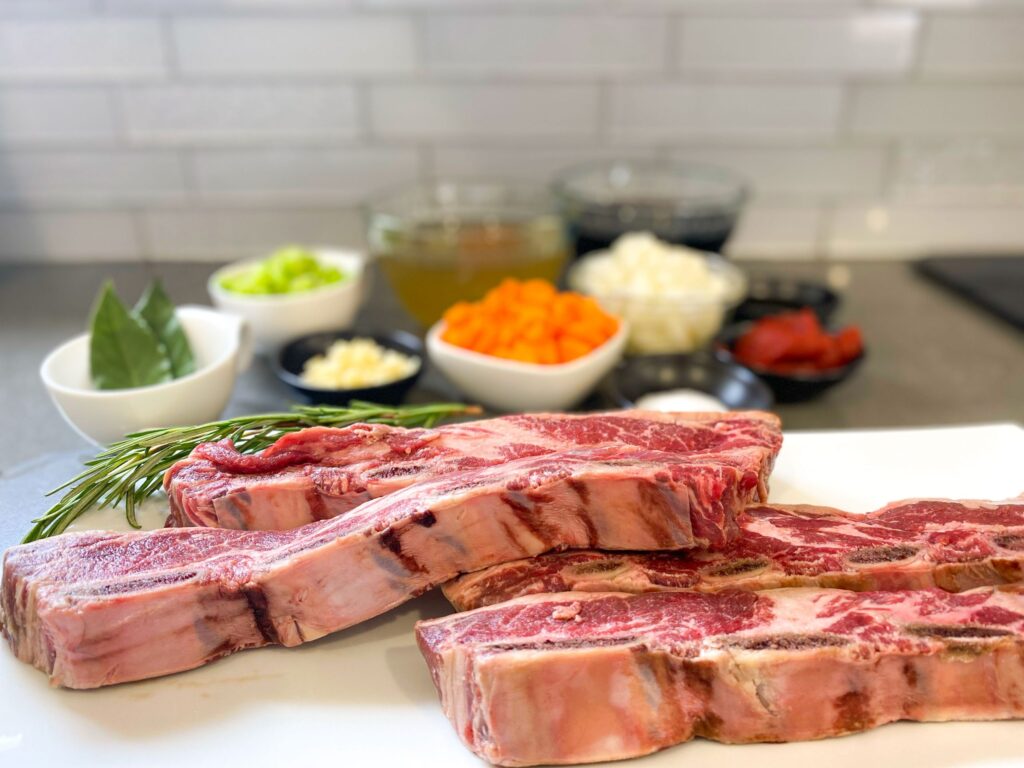Braising is a slow-cooking technique that tenderizes tougher cuts of meat to make them more flavorful. Popular cuts for braising include chuck roast, brisket, short ribs, pork shoulder, and lamb shanks. Lean cuts of meat do not work well for this technique due to drying out. Before braising, brown the meat to develop flavor and color. Then add liquid and aromatics such as broth, wine, tomatoes, and herbs. The meat should be cooked for several hours until it falls apart. Braised meat can be stored in the refrigerator for up to four days or frozen for up to three months.
Braising: The Slow and Steady Way to Tender, Flavorful Meat
Braising is a cooking technique where you slowly cook meat in liquid over a low heat until it becomes tender and flavorful. This method is perfect for tougher cuts of meat that need time to break down and become tender, and it can be used to create a wide range of delicious dishes.
Choosing the Right Cut of Meat
When it comes to braising, not all cuts of meat are created equal. Tougher cuts with a lot of connective tissue and fat are ideal because they need to be cooked for a long time to break down and become tender. Some popular cuts for braising include:
- Chuck roast
- Brisket
- Short ribs
- Pork shoulder
- Lamb shanks
It’s important to note that leaner cuts of meat, like chicken breasts or lean pork chops, are not ideal for braising as they tend to dry out during the long cooking process.
Seasoning and Browning the Meat
Before you start braising, it’s important to season and brown the meat to develop flavor and color. This can be done by rubbing the meat with salt, pepper, and other spices, and then searing it in a hot pan or Dutch oven until it browns on all sides.
Browning the meat caramelizes the natural sugars and adds depth of flavor to the dish. Be sure not to overcrowd the pan while browning the meat, as it can cause the meat to release moisture and steam instead of browning properly.
Adding Liquid and Aromatics
Once the meat is browned, it’s time to add liquid and aromatics to the pan. This can include things like beef or chicken broth, wine, soy sauce, tomato sauce, onions, garlic, herbs, and spices.
The liquid should come about halfway up the sides of the meat, as too much liquid can cause the meat to become soupy and lose flavor. Aromatics can be added to the liquid, and the meat can be placed back into the pan and covered with a lid.
Cooking the Meat
The meat should now be cooked over low heat for several hours until it becomes tender and falls apart. This can be done on the stove or in the oven, and the meat should be checked periodically to ensure that it doesn’t dry out or overcook.
Some braising recipes call for the sauce to be reduced to a thick, rich consistency, while others maintain a more soupy consistency. This depends on the dish you are making and your personal preference.
Serving and Storing Braised Meat
Braised meat can be served as is, or it can be shredded and used in a wide range of dishes, including sandwiches, tacos, stews, and more. The liquid can also be strained and used as a flavorful sauce or gravy.
Braised meat can also be stored in an airtight container in the refrigerator for up to four days, or frozen for up to three months. Reheat the meat gently in the oven or on the stove to maintain its tenderness and flavor.
Conclusion
Braising is a slow and steady cooking technique that yields flavorful, tender meat that is perfect for a wide range of dishes. By choosing the right cut of meat, seasoning and browning it properly, adding liquid and aromatics, and cooking it slowly over low heat, you can create delicious, restaurant-worthy dishes at home.
